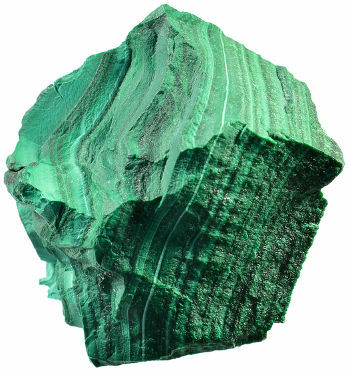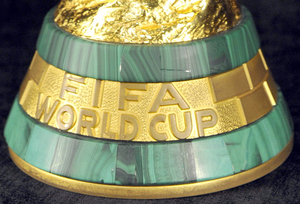When we talk about chemical composition of the World Cup cup, we refer to all the elements or chemical substances present in one of the most desired objects in the football world.
Italian Silvio Gazzaniga was the one who designed and determined the chemical composition of the current cup of world Cup. The project was carried out by Milano Bertoni, also Italian, in 1974.
We say current cup because it was built in 1974, since, as the Brazilian soccer team won its third Cup of the World Cup in 1970, was able to take the Jules Rimet Cup (first cup representing the World Cup, built in 1930) to House.
Read too:Zabivaka: Russia 2018 World Cup mascot
Chemical composition of the cup
The World Cup cup is made up of approximately 5 kg of gold 18K (homogeneous mixture which must have 75% gold), positioned on a base with 1.7 kg of the mineral malachite.
18 carat gold, in addition to 75% gold, also has a combination of metals silver and copper in its composition, in the proportion 12.5% and 12.5%, respectively, which are mixed with gold through the process of melting (transition from solid to liquid) and consequent solidification (transition from liquid to solid). Got confused? Look
how the changes in physical states of matter occur.O 18K gold It is used because of its high tenacity, compared to 24K gold (pure gold), and is therefore a very resistant object to mechanical shocks.
THE malachite is a copper ore mainly formed by copper carbonate (CuCO3) and copper sulfide (Cu2S) and found in mountainous regions between Asia and Europe. It is a reasonably resistant material and has a hardness around 3 to 4 on the Mohs scale, that is, it can be scratched by a copper coin or a simple kitchen knife.
Read too:World Cup symbols Russia 2018

malachite mineral
Visual characteristics of the cup

Human figure present in the World Cup cup
(Credit: fig/ Shutterstock.com)
The trophy features two human figures, which start from its base (made of malachite) and support the representation of the globe. On the base, in addition to the term FIFA WORLD CUP, there are also spaces for recording the names of all world champions from 1970 onwards.

Spaces at the base of the cup for recording the names of champions
(Credit: ANDREA DELBO/ Shutterstock.com)
Curiosities about the World Cup cup
After 1970, no team that won the cup three or more times had the right to take it home permanently. The champions of each Cup receive a replica identical to the original, that is, every four years, a new cup must be built.
The Jules Rimet cup was stolen from the headquarters of the Brazilian Football Confederation (CBF) in 1983 and was never found again.
*Image Credit: fig / Shutterstock
By Me. Diogo Lopes
Source: Brazil School - https://brasilescola.uol.com.br/quimica/composicao-quimica-taca-copa-mundo.htm

